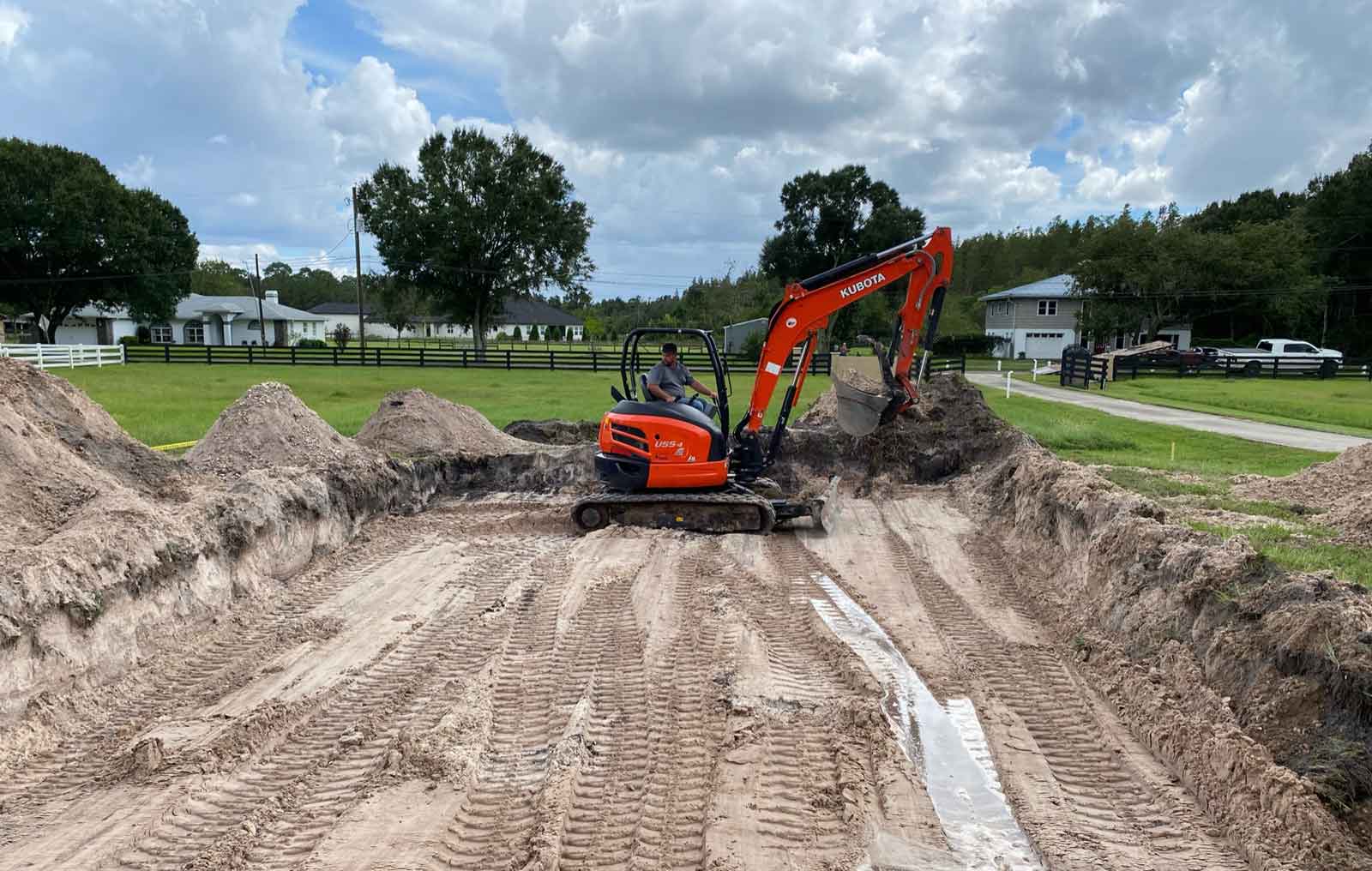When installing a septic system on your property, it’s essential to ensure the excavation gets done properly. This means considering things like the water table, type of soil, vegetation, and gravity.
This article will discuss why proper excavation is essential and what can happen if incorrectly executed. We’ll also look at the process for de-watering and the measurements and specifications required for a successful installation.

What Is septic system excavation?
Excavation for septic system installation first involves digging a hole in the ground for the septic tank and drainfield. The hole needs to be big enough to accommodate the entire septic system. The average size of a septic tank is roughly 4.5 feet wide, 8 feet long, and 6 feet tall. Meanwhile, the average size of a drainfield is 375-500 square feet, and the depth of the drainfield depends on the soil’s composition.
Why is proper excavation important?
There are a few reasons why proper septic system excavation is so crucial.
If Florida’s high water table and frequent flooding aren’t considered, the septic tank could float when it’s empty. This floating can trigger multiple problems, including clogs in the house and a compromised septic tank.
A poorly executed excavation could also lead to water from the water table seeping into the drainfield. This can cause over-saturation, which leads to drainfield failure and ultimately devastating environmental effects.
Can a septic tank move after installation?

Yes, a septic tank can move after installation if improperly installed. The cause is usually due to over-excavation, which can happen if the hole gets dug too deep or the septic system components are not properly secured.
If a septic tank moves, the effects are severe. The tank could crack or collapse, leading to sewage leaks. The drain field can get damaged. In some instances, the entire septic system might need to get replaced.
Common installation obstacles
Multiple obstacles can impede the septic system installation process, such as water coming up from the water table.
Rock is another obstacle that often presents installation challenges. If there is too much rock in the ground, it can make it difficult to excavate.
The process of well-pointing
Water may compromise the desired installation site during excavation if the water table is high. A professional company will try to prevent this through a process called well-pointing.
Well-pointing involves pumping water out of the hole so it can get appropriately excavated. The pumps must be powerful enough to remove all the water and any seepage that might occur. If this process is required but does not occur, the water can cause a collapse of the walls of the excavation site. This can create a dangerously expanding, cavernous opening.
How Florida is uniquely affected
Florida is a unique state regarding septic system excavation. Florida’s water table is often very high during the wet season, making excavation challenging.
Hiring a septic system installer experienced in dealing with Florida’s unique challenges is critical to avoid these problems.

What Are the Measurements Required for a Septic Tank?
The Florida Department of Health (FDH) regulates new septic system installations. The FDH mandates a few key measurements and specifications you should know.
For instance, the septic tank must be at a minimum of 900 gallons. The requirement increases with occupancy and the size of the dwelling.
The septic tank must also be positioned level with the outlet plumbing from the dwelling. If the elevation is wrong, the septic tank will not function properly. The tank category also plays a role. Each tank is ranked on depth and strength. If a lower-category tank is installed too deep, it can eventually collapse. This is why ACE Septic & Waste primarily uses CAT4-rated tanks for Floridians.
Pitch matters when installing a tank correctly. The inlet pipe from the dwelling to the tank requires a negative pitch of ⅛” and ¼” per foot to maintain the plumbing code. If gravity cannot be achieved from the outlet pipe to the drainfield, a dosing tank will be required to pump the effluent to the drainfield.
Many things can go wrong with septic system installation. That’s why hiring a professional septic system installer with the experience and knowledge to do the job right is essential. That starts with proper excavation.
For septic service in Tampa and the surrounding region, contact ACE Septic & Waste. We have the knowledge and know-how to install your septic system, and we can help mitigate the problems that might occur during the excavation process.








